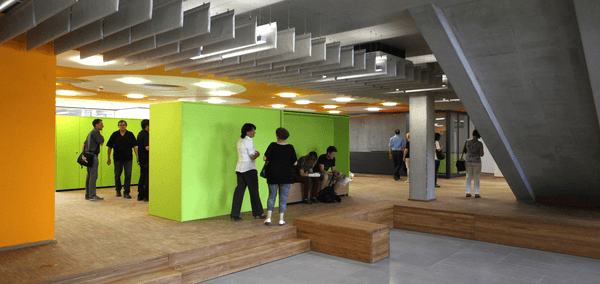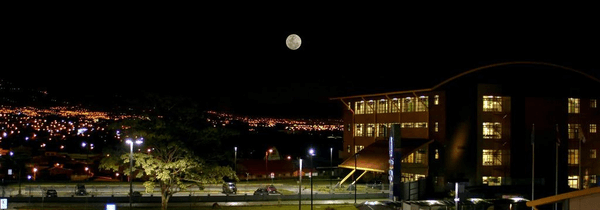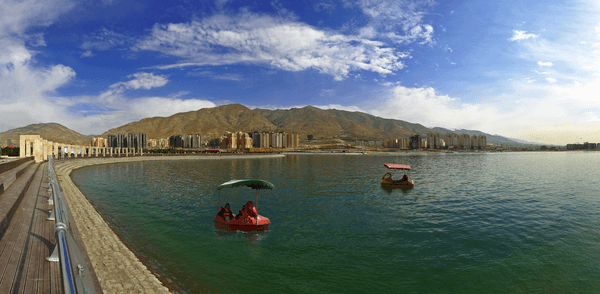 stakeholder meeting - © City of Johannesburg website (http://www.joburg.org.za/index.php?option=com_content&view=article&id=5014:city-talks-to-stakeholders&catid=116&Itemid=197)
stakeholder meeting - © City of Johannesburg website (http://www.joburg.org.za/index.php?option=com_content&view=article&id=5014:city-talks-to-stakeholders&catid=116&Itemid=197)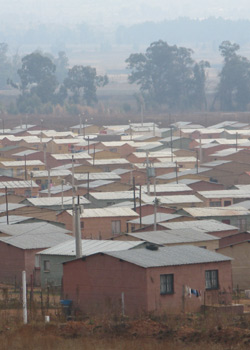 Housing - © City of Johannesburg website, (http://www.joburg.org.za/index.php?option=com_content&view=article&id=5014:city-talks-to-stakeholders&catid=116&Itemid=197)
Housing - © City of Johannesburg website, (http://www.joburg.org.za/index.php?option=com_content&view=article&id=5014:city-talks-to-stakeholders&catid=116&Itemid=197) Executive Mayor Amos Masondo - © City of Johannesburg website, (http://www.joburg.org.za/index.php?option=com_content&view=article&id=5014:city-talks-to-stakeholders&catid=116&Itemid=197)
Executive Mayor Amos Masondo - © City of Johannesburg website, (http://www.joburg.org.za/index.php?option=com_content&view=article&id=5014:city-talks-to-stakeholders&catid=116&Itemid=197)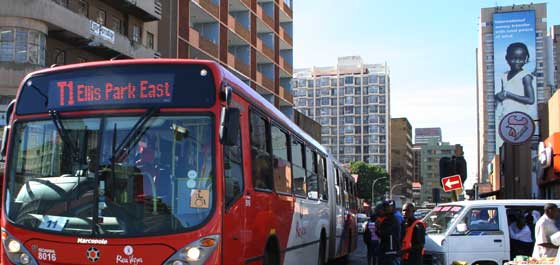 Public transport - © City of Johannesburg website (http://www.joburg.org.za/index.php?option=com_content&view=article&id=7158&catid=214)
Public transport - © City of Johannesburg website (http://www.joburg.org.za/index.php?option=com_content&view=article&id=7158&catid=214)
City
Johannesburg
Main actors
City Government, Private Sector, other
Project area
Inner City
Duration
2006 - 2011
The project involves working with residents, as well as strategically planning, to ensure equitable service delivery across the municipality
Integrated development plans (IDP) are the main planning instrument in South African local governments. IDPs are a statutory requirement of the Municipal Systems Act and a key tool in developmental local government. The planning process involves working with residents to establish an overall vision for the municipality, as well as planning strategically to ensure equitable service delivery across the municipality, to promote economic development, provide infrastructure, and ensure long-term sustainability.
IDP has proved to be a robust instrument for urban strategic planning in Johannesburg. It has been systematically implemented, is monitored on an on-going basis, and reviewed annually to respond to changing internal and external conditions. A new five-year IDP has been developed after the local government elections scheduled in 2011.
Johannesburg is the premier business location in South Africa. The city generates 16.5% of national output and the metropolis generates one-third of national output. The city houses 70% of top 100 companies’ headquarters, and 30% of the country’s exports. Johannesburg grew at a rate of 4.5% p.a. between 1996 and 2004.
The city still experiences high levels of unemployment at 32%; about one-fifth of the population are estimated to live in poverty; and the city exhibits high levels of income inequality. Although access provisions to adequate water, sanitation, and waste removal are high (over 90%), a large number of people live in less than adequate shelter in backyard shacks, overcrowded formal housing, and informal settlements.
The South African constitution emphasises developmental local government as the key to achieving the objectives of:
- providing democratic and accountable government for local communities;
- ensuring provision of services to communities in a sustainable manner;
- promoting social and economic development;
- promoting a safe and healthy environment;
- encouraging involvement of communities and community organisations in local government activities;
- promoting rights associated with, for example, the environment, water and health care.
Integrated Development Plan (IDP) is a statutory medium-term (5-year) strategic plan which guides socio-economic and spatial development and service delivery within a municipality. The City of Johannesburg 2006-2011 IDP was finalised and approved following local government elections in March 2006. Key features included:
- Sector planning: workshops were held with stakeholders on a sectoral basis (e.g. environment, health) to define an overall long-term vision, visions for each sector and sector-based goals, objectives and programmes.
- Ward-based planning: meetings were held with ward committees to define needs at local level.
- Inter-governmental alignment: engagements were held in coordination with provincial government departments to ensure that functions are aligned and integrated.
- Stakeholders’ summit: a summit of all stakeholders was held in May 2006 with over 2000 representatives representing the widest spectrum of civil society within the city to finalise the overall plan.
- Multi-party engagement: council policy oversight (multi-party) committees scrutinised the plans and provided critical feedback to the Mayoral Executive Committee and Council.
The Integrated Development Planning concept is made up of the following core components:
Development strategies:
- the municipality vision (including internal transformation needs);
- Council development priorities and objectives;
- Council development strategies.
- Project integration:
- spatial development framework;
- disaster management plan;
- integrated financial plan (both capital and operational budget);
- other integrated programmes;
- key performance indicators and performance targets.
Approval:
Integrated Development Planning is a management tool and thus enjoys very high status because it enables municipalities to:
- obtain access to development resources and outside investment;
- provide clear and accountable leadership and development direction;
- develop cooperative relationship with stakeholders and communities;
- monitor performance of municipal officials;
- provide officials with a mechanism to communicate with councillors;
- enable officials to contribute to the municipality vision and decision making process.
Components in the City of Johannesburg IDP
- Sustainable environmental management
The protection of river eco-systems and ecological reserves, biodiversity protection, sustainable waste management, rationalising and diversifying energy sources, pollution reduction and environmental mainstreaming.
On climate change and reduction of greenhouse gas emissions, the five-year programme includes mitigation and adaptation strategies, energy efficiency and demand management, and using renewable and / or alternative energy sources.
- Improving housing conditions, particularly slums, and meeting Goal 7, Target 11, Millennium Development Goals
Johannesburg Integrated Development Planning defines its role as a facilitator of housing delivery, as follows:
- on a progressive basis to provide access to affordable, safe and decent accommodation;
- to meet housing needs at all levels of the housing ladder through partnerships and supply;
- a secondary housing market so that households can realise the economic value of their residential assets; and
- increased liveability and sustainability in residential communities, with equitable access to green spaces, social and cultural facilities, transportation and economic opportunities.
Integrated Development Planning programmes underpinning these objectives include formalising informal settlements, backyard accommodation, inner city upgrading, hostel conversion, and special needs. The flagship housing programme seeks to create 100,000 well-located and good quality housing units over five years, targeted at low income and affordable housing markets.
- Local economic development LED
The municipal LED program entitled accelerating towards 9% economic growth is based on the idea that national growth of 6% by 2010 would be enabled by 9% growth in the City of Johannesburg. Programme elements include reducing the cost of doing business, promoting key growth sectors, enhance beneficiation, build a commercial ‘ladder’ for small business development, and scale up intervention measures on freight and logistics and inner city regeneration. The intention is not only to increase economic growth (from 6% to 9%), but also to ensure that the benefits of growth are shared equitably through additional employment, black economic empowerment and enterprise development.
- Reducing urban poverty and exclusion
Integrated Development Planning sets out a wide range of programmes to be rolled out over the five-year period:
- social package providing all households in Johannesburg with access to free basic water (6 kilolitres per month), free basic electricity (50 kWh per month), and subsidies for sanitation and waste removal. The package also guarantees other free municipal services such as health clinics, libraries, and social amenities;
- improving access to national / provincial financial support such as state pension, child support, and disability grant;
- various initiatives such as programmes for vulnerable groups, sport and recreation facilities, and arts and culture programmes.
- Contributing to rural-urban integration
Johannesburg City point of departure is that rapid urbanisation is a feature of major cities in developing countries. The city accepts that increasing in-migration places a major burden on housing and social services. The approach is therefore that urbanisation provides the rural poor with access and opportunities unavailable in their places of origin.
-
Reducing conflict and enhancing city safety
Integrated Development Planning sets out a comprehensive safety initiative including the following programmes: crime prevention, safety for women and children, traffic safety enforcement, disaster management, community disaster mitigation information, emergency response improvement, and by-law compliance program. Responsibility for these programmes falls mainly on Johannesburg Metro Police Department and Emergency Management Services.
- Creating civic capital and promoting citizenship
There a wide range of initiatives including partnerships enablement programme, ward committee support and resourcing programme, dialogue on citizenship in Johannesburg, civic education strategy, amongst others.
Integrated development planning is a policy and part of Johannesburg urban development. The budget has to be integrated indirectly in City of Johannesburg public expenditures. Since IDP serves various sectors (housing and settlement, infrastructure, safety, education, culture arts, tourism...) it has no budget needs of its own, but requires sound financial investment in order to implement differing integrated sector plans. Integrated Development Planning is an over-arching policy guiding urban development in all sectors.
Although no specific budget is needed, there is need to invest human resources in IDP. Dedicated and highly-qualified personnel are required in order to design Integrated Development Planning.
Integrated Development Planning is a statutory medium term (5-year) strategic plan which guides socio-economic and spatial development and service delivery within a municipality. The most important features in IDP conceptualisation, production, and implementation are set out as follows:
- Integrated Development Planning was initiated with the full support of the mayor, which was essential for driving formulation, consultation and approval processes.
- Integrated Development Planning was formulated in conjunction with the Growth and Development Strategy defining the long-term (30 years plus) vision and strategy. This ensured coherence between various planning frameworks and instruments in the city.
- Integrated Development Planning was married to the performance management system, to ensure implementation, monitoring, and evaluation of defined commitments.
- Stakeholder participation: there was an extensive process of stakeholder participation.
- Inter-governmental alignment: Integrated Development Planning was developed in close conjunction with other spheres of government and adjacent municipalities to ensure inter-governmental and inter-municipal alignment and integration.
Integrated Development Planning results:
- Acceleration towards 9% economic growth.
- The initiative aimed at regenerating the historical central city through public investment, sustained maintenance, and concentrating private sector investment.
- Bus rapid transit (BRT): modelled on rapid transit systems first developed in Latin America as a comprehensive and cost-effective solution the city implemented the first line of an effective public transport system.
- A number of initiatives including meeting FIFA requirements (stadiums, fan parks etc.) as a host city, as well as legacy projects seeking to ensure that this opportunity to stage the event promotes long-term socio-economic development have been implemented.
- Human and community development has been enhanced.
Local governments have seen Integrated Development Planning plans fail when:
- Clear boundaries between local government responsibilities and those of central government were not established. Transferring functions must ensure that local governments have the necessary capacity to perform their functions.
- Plans focused only on local economic development side-lining other aspects of urban development, including organisation of territory, sustainability, civic citizenship, cultural identity, and democracy, among many other aspects.
- The focus was only on municipal action programmes. Moreover, strategies supported only by local government are very fragile when electoral change takes place.
- Weak strategic content, with very general and vague objectives, led to lack of responsibility to deliver amongst competent bodies.
- Strategies were constructed for the wrong reason, had no clear focus, were sometimes merely intended for city marketing, and were not connected to tasks nor with a clear commitment to implementation.
- Potential for public support was ignored or reduced, for example, limited to providing information.
- Problems were only solved as they arose. Cities from all regions, especially in Africa and Europe, have reported experiencing ‘being imprisoned in daily management and troubleshooting.
- A lack of support from higher-tier government, or there a ‘disconnection’ between local and national government.
- Lack of leadership by local government led to strategies driven by experts or groups without political legitimation.
- Financing fell short and there was insufficient relation to municipal budgets.
- Lack of ability to push for joint commitment from all stakeholders and for cross-city working with neighbouring municipalities.
How are strategic plans tackled?
Integrated Development Planning (IDP) Johannesburg implementation concept is based on the framework for City Development Strategies compiled by United Cities and Local Governments (UCLG). From this case study on Integrated Development Planning, a management cycle of three major sequential stages of development can be identified. The graphic illustration shows that the City Development Strategy process is a cyclical planning methodology which does not end when projects and activities are implemented. City Development Strategy builds on powerful communication, monitoring / evaluation and institutionalisation, helping to revise assessment, planning and implementation continuously in order to improve performance. This methodology can be seen as a role model for most City Development Strategy implementation.
IDP advantages:
Governance and cooperation:
-
Integrated Development Planning can help local government establish performance-based management, creating sustainable economies and social capital;
-
Integrated Development Planning can identify more clearly challenges facing a local authority and can respond to the challenges more directly and more effectively than national government;
-
Integrated Development Planning can provide greater coherence and better communication between administrative structures to coordinate public actions through multi-level governance;
-
Integrated Development Planning is a tool for change management helping to prioritise and improving institutional responses and local decision making.
Mobilising stakeholders and consensus:
- Integrated Development Planning supports and structures dialogue between stakeholders, e.g. private sector and inhabitants, and can help to develop consensus-based solutions;
- Integrated Development Planning provides new perspectives and opportunities for social inclusion;
- Integrated Development Planning can provide continuity between periods in local government, so that plans are not abandoned once other councillors are in power, i.e. creating stability for inhabitants.
- Integrated Development Plan 2006/2011
- Johannesburg Development Agency, Annual Report 2009/2010
(see links below)
On Map
The Map will be displayed after accepting cookie policy
